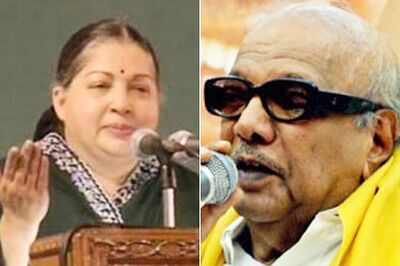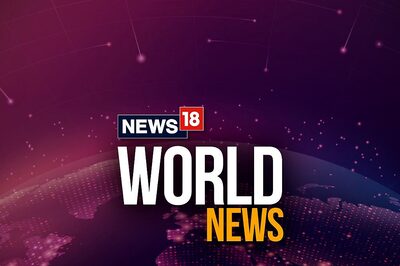
views
On August 10, 2022, Nitish Kumar became the Chief Minister of Bihar for the eighth time in the last 22 years. He broke his alliance with the Bharatiya Janata Party (BJP) and joined hands with the Rashtriya Janata Dal (RJD), the same party that he had dumped in 2017, to align with the BJP, whom he had previously left in 2013, to form the Mahagathbandhan with the RJD and the Congress and formed the government with them in 2015.
Kumar, 71, has had a continuous run since November 2005. Despite waning popularity, he has managed to convince his political opponents and the electorate that mistakes are those that others commit. Since he parted ways with the BJP, the third such instance in the last two decades, Kumar also seems to have become an automatic opponent of Prime Minister Narendra Modi for the 2024 Lok Sabha elections. Although it’s too early to see how things pan out as the ‘united’ Opposition doesn’t exist, and there are far too many probable candidates now, Kumar’s political future seems assured for the next two years.
A political survivor unlike any in the recent past, Nitish Kumar has carved out a unique niche in Indian politics. One of the earliest supporters of the National Democratic Alliance (NDA), Nitish served as a Union Minister in the Atal Bihari Vajpayee government and became Bihar’s CM for the first time in 2000. He failed to muster a majority, and his government fell within a week. He returned as a Minister in the Vajpayee cabinet and later allied with the BJP to become the CM again in 2005 and remained in the fold till 2014. Nitish Kumar’s decision to position himself as the somewhat ‘lesser’ of the evils compared to his sometimes friend, sometimes foe political rival Lalu Prasad Yadav seems to have held him in good stead. He seamlessly jumps across ideological lines and makes friends with everyone until he has to jump sides again.
One of the first supporters of the NDA, Nitish Kumar, along with N Chandrababu Naidu, was seen as one of the few ‘regional’ leaders who could move to the national level. It was the early 2000s, and both Kumar and Naidu were even touted as future prime ministerial candidates. The former was yet to craft a CM legacy, while the latter had set a template in motion that most states would soon emulate. It’s interesting to note that both Naidu and Kumar were considered national-level material even before Gujarat CM and future PM Narendra Modi. One wouldn’t be wrong in saying that Modi’s immensely successful administration style, termed the ‘Gujarat Model’, was yet to emerge when Naidu was already the poster boy of corporate and young India to lead the country in the new millennium.
Time might be an illusion, but timing is an art and essential for the political future. Try as hard, most political commentators and analysts tend to let presentism take over while commenting on what went wrong with Chandrababu Naidu’s or Kumar’s chances to transition to the Centre. If Naidu perhaps shifted focus while his reforms were still underway, Kumar 1.0 was too focused on establishing himself as the only option for Bihar. It’s noteworthy that unlike Gujarat between 2001-2007, the year where Narendra Modi firmly ensconced himself as the undisputed leader in the state, undivided Andhra Pradesh was leaps and bounds ahead in terms of resources and industry. Bihar might not have been counted as a leading state during the same period, but most governments in the Centre focused on setting things right in the state.
Using a comparatively controversy-free image, Kumar bettered his chances whenever in a contest with Lalu Prasad Yadav and believed that his honest and secular image would provide him with the edge. Nitish Kumar’s biggest strength at a state level, which has contributed significantly to his political survival, might bring him to the fore as an alternative PM face for 2024. Still, it might also be the biggest factor that works against him. Kumar’s work has earned him the title of ‘Sushasan Babu’ or the man of good governance. However, he still seems to have based his political brand on being the ‘alternative’. When compared to Narendra Modi, this might not be enough. Modi has asked the electorate to vote for him based on his work and what he offers to do across his two decades in public life.
This is perhaps Nitish Kumar’s last shot at public office, and there lies the conundrum — his Janata Dal (United) was the third single-largest party in the previous two state Assembly polls. More than taking on Modi or even becoming the face of the Opposition, Kumar has relied upon someone else’s support to become the chosen one. From how things stand now, Nitish Kumar’s first hurdle would be to overcome himself.
Gautam Chintamani is a film historian and the author of ‘Rajneeti’ (Penguin-Random House, 2019), the first biography of Rajnath Singh. The views expressed in this article are those of the author and do not represent the stand of this publication.
Read all the Latest Opinion News and Breaking News here




















Comments
0 comment